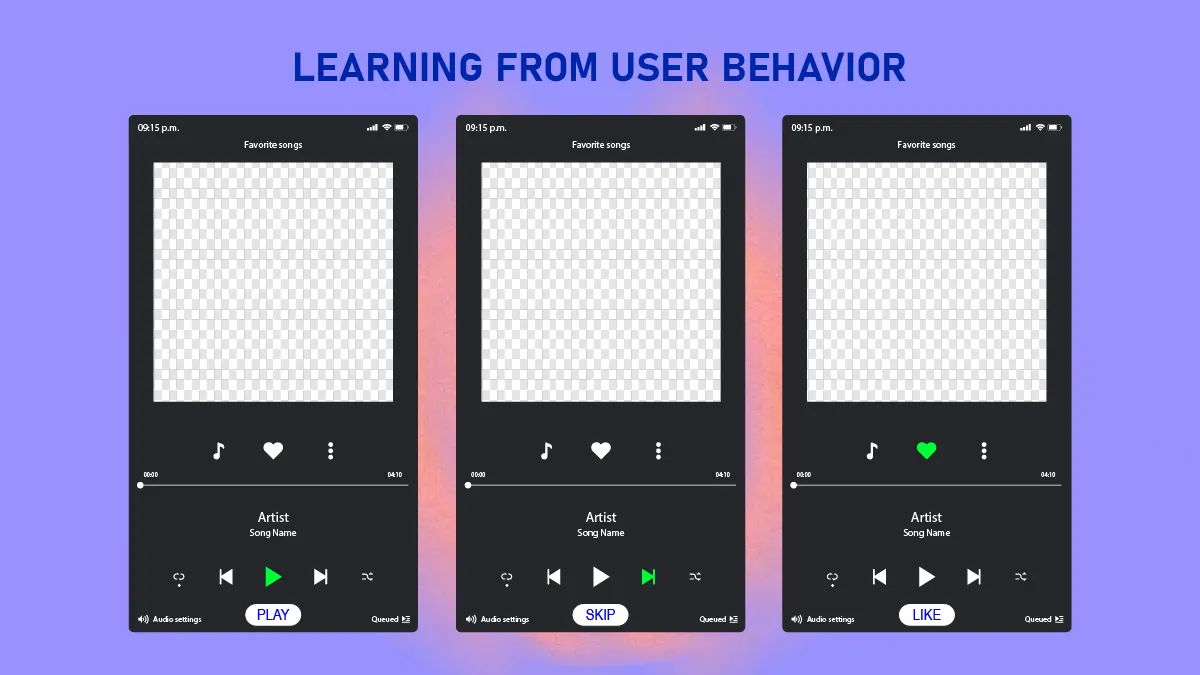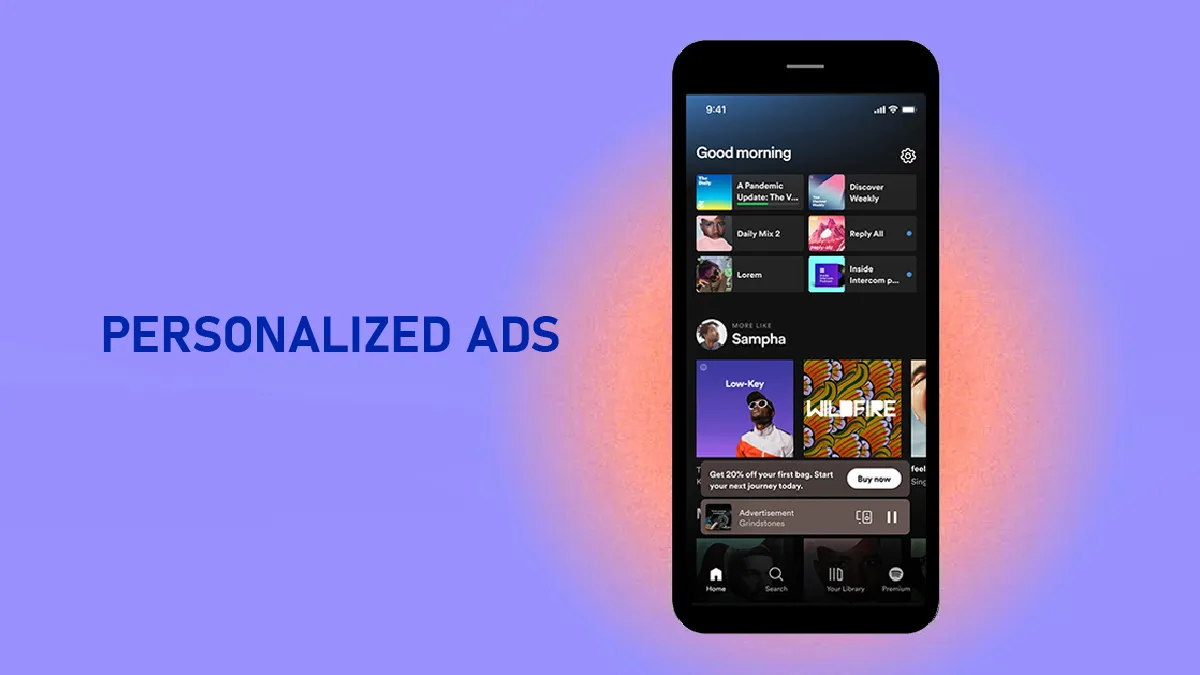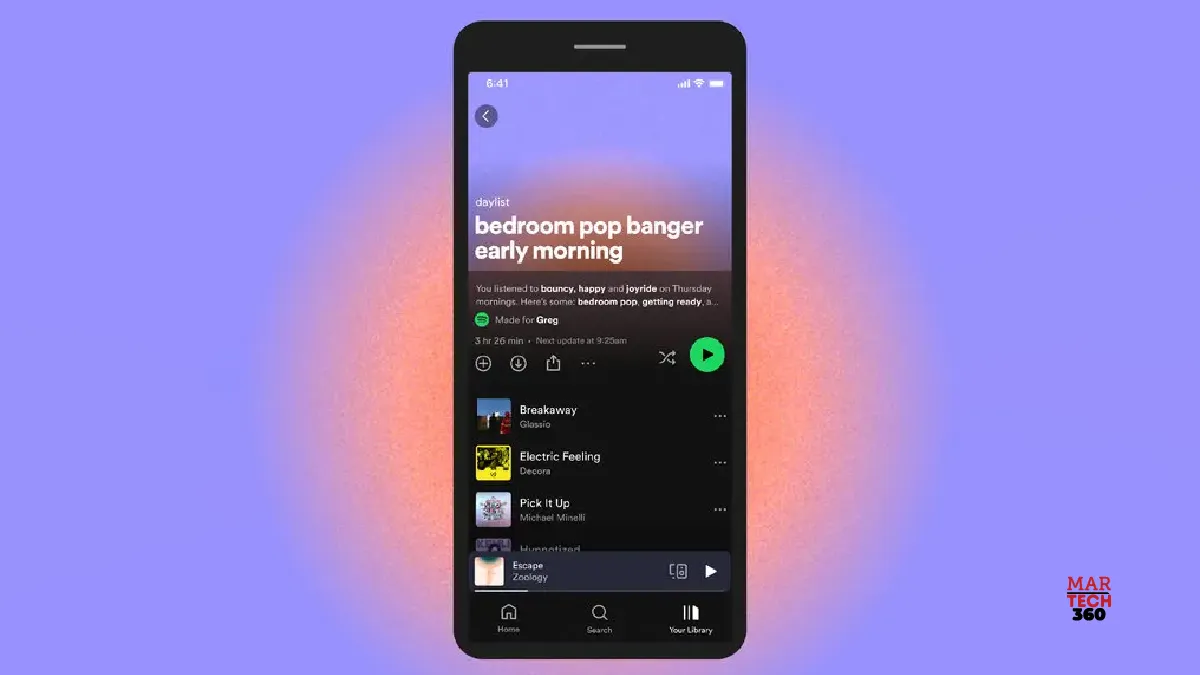Personalization is now a standard expectation in the digital age. Users demand experiences tailored to their preferences. Companies that fail to deliver will lose their audience. Spotify stands out as a master of hyper-personalization. Spotify uses AI and marketing tech. Spotify customizes playlists, recommendations, and ads. This creates a smooth, personal experience. As a result, it boosts customer loyalty and engagement. In 2024, Spotify alone paid out a record US$10 billion to the music industry—totaling nearly $60 billion since its foundation.
Using these strategies, businesses can achieve similar success and improve customer relationships.
The Power of AI in Spotify’s Personalization Strategy
Spotify changed how we find and listen to music with its AI recommendation system. The company’s smart machine learning algorithms look at user data. They then create content that matches each person’s preferences. Here are some of the core ways Spotify uses AI for personalization:
1. Collaborative Filtering: Learning from User Behavior
 Spotify gathers a lot of data from how users interact. This includes songs they play, skip, like, or add to playlists. Spotify uses collaborative filtering to group users with similar listening habits. It then suggests songs based on these shared preferences. This method lets Spotify suggest songs, even if a user has never heard them. Spotify’s ML models handle almost half a trillion events each day. They spot links between artists, songs, podcasts, and playlists. This helps the platform give smart and personalized recommendations.
Spotify gathers a lot of data from how users interact. This includes songs they play, skip, like, or add to playlists. Spotify uses collaborative filtering to group users with similar listening habits. It then suggests songs based on these shared preferences. This method lets Spotify suggest songs, even if a user has never heard them. Spotify’s ML models handle almost half a trillion events each day. They spot links between artists, songs, podcasts, and playlists. This helps the platform give smart and personalized recommendations.
Also, the collaborative filtering technique improves as users engage more. User interactions directly improve platform recommendations, driving user engagement. It helps ensure they come back to the platform often.
2. Natural Language Processing (NLP): Understanding Music on a Deeper Level
Spotify’s NLP algorithms look at a lot of data. They examine metadata, song lyrics, social media posts, blogs, and news articles. This helps them uncover how the public feels about certain artists, albums, and genres. This data recommends songs based on trends and user interests. It helps the platform remain relevant and respond to new music tastes.
NLP empowers Spotify to categorize music based on sentiment and thematic elements. If people often call a song “relaxing” or “chill” in online talks, Spotify puts it in the “calm vibes” playlist. This keeps the platform intuitive and attuned to listeners’ moods.
3. Convolutional Neural Networks (CNNs) & Audio Analysis
Beyond metadata, Spotify’s AI also examines the actual audio characteristics of songs. The platform uses CNNs to spot patterns in melody, tempo, and rhythm. This helps it categorize music more accurately. This helps give better recommendations. It focuses on sonic similarities, not just user preferences.
Spotify also evaluates lyrics, tone, and instrumental elements to refine its recommendations. If a listener likes acoustic music, Spotify’s algorithm can spot that sound. It recommends songs with similar instrumentation and tempo, even
4. Reinforcement Learning: Continuous Improvement
Spotify’s recommendation engine constantly evolves. The AI system uses reinforcement learning. It tests and improves its suggestions based on how users engage. When a playlist gets a lot of interaction, the algorithm changes. It will then prioritize similar content in future recommendations.
Spotify’s learning process helps improve user experience. It keeps suggestions fresh, engaging, and tailored for each listener.
Martech: The Driving Force Behind Spotify’s Marketing Success
AI drives personalization, and Martech helps Spotify use data for targeted marketing campaigns. Here’s how Spotify integrates Martech into its strategy:
Dynamic Ads and Programmatic Advertising
 Spotify uses AI-driven programmatic advertising to deliver personalized ads. Advertisers can show audio and visual ads that fit each user. They base this on listening history, location, and user demographics. This ensures a more engaging ad experience while maximizing advertiser ROI.
Spotify uses AI-driven programmatic advertising to deliver personalized ads. Advertisers can show audio and visual ads that fit each user. They base this on listening history, location, and user demographics. This ensures a more engaging ad experience while maximizing advertiser ROI.
Spotify’s advertising platform uses real-time bidding and AI to optimize ad placements. Brands can target users by their listening habits. A fitness brand can reach people who love workout playlists.
Behavioral Email and Push Notifications
Spotify’s personalized emails and push notifications go beyond generic messaging. Instead, they are tailored to users’ listening habits. A user who loves jazz might get suggestions for a new jazz album or a playlist with their favorite artists.
Spotify uses AI to find the best time for notifications. This keeps users engaged but not overwhelmed.
Spotify Wrapped: A Masterclass in Data-Driven Marketing
Spotify Wrapped is one of the platform’s most successful marketing campaigns. Spotify transforms users’ listening habits into a fun, shareable experience. This turns user data into a viral marketing hit. This campaign not only boosts engagement but also strengthens brand loyalty.
Wrapped is now a cultural event. Each year, millions of users share their favorite music. This social proof helps Spotify maintain its dominance in the streaming industry.
How You Can Apply Spotify’s AI & Martech Strategies to Your Business
Now that we see how Spotify personalizes its service, let’s explore how you can use these strategies in your business.
Leverage AI-Driven Personalization
Implement AI-powered tools that analyze user behavior and provide personalized recommendations. This advanced technology increases user engagement. It also boosts conversions in e-commerce, media, and other areas.
Tools to Consider:
- Google AI Recommendations
- Adobe Sensei
- Dynamic Yield
Utilize Martech for Targeted Campaigns
Martech solutions can help automate and optimize your marketing efforts. Use CRM and data analytics tools. They help you segment your audience. This way, you can send hyper-targeted messages.
Tools to Consider:
- HubSpot
- Salesforce Marketing Cloud
- Marketo
Implement Behavioral Email and Push Notifications
Use user data to personalize your communication strategy. Personalized messaging boosts engagement. It recommends products from past purchases and sends reminders for abandoned carts.
Best Practices:
- Use AI to analyze customer preferences
- Send timely, relevant messages
- Avoid over-messaging to prevent user fatigue
Create Viral, Data-Driven Campaigns
Draw ideas from Spotify Wrapped to turn user data into an engaging marketing tale. Design engaging user interactions and create infographics that really stand out. Share them with others and celebrate your customers’ milestones. All these efforts will get people involved and talking about your brand.
Optimize Content Discovery with AI
Use AI to show users content that matters. This includes blogs, videos, and products. This improves user experience and retention.
Tools to Consider:
- Algolia (AI search and discovery)
- Recombee (AI recommendation engine)
- Amazon Personalize
Final Thoughts
Spotify succeeds in hyper-personalization by blending AI with Martech. This mix creates a unique experience for every user. This delivers a tailor-made experience for every user. These strategies work for all fields. It doesn’t matter if you’re in music streaming, e-commerce, or content marketing. They drive engagement, retain customers, and guarantee satisfaction.
Invest in AI-driven personalization and use Martech for targeted campaigns. This approach creates data-driven experiences. As a result, your brand can connect with customers more deeply. Like Spotify, your business can use data to grow. In today’s digital world, personalization is key to staying ahead.


Comments are closed.